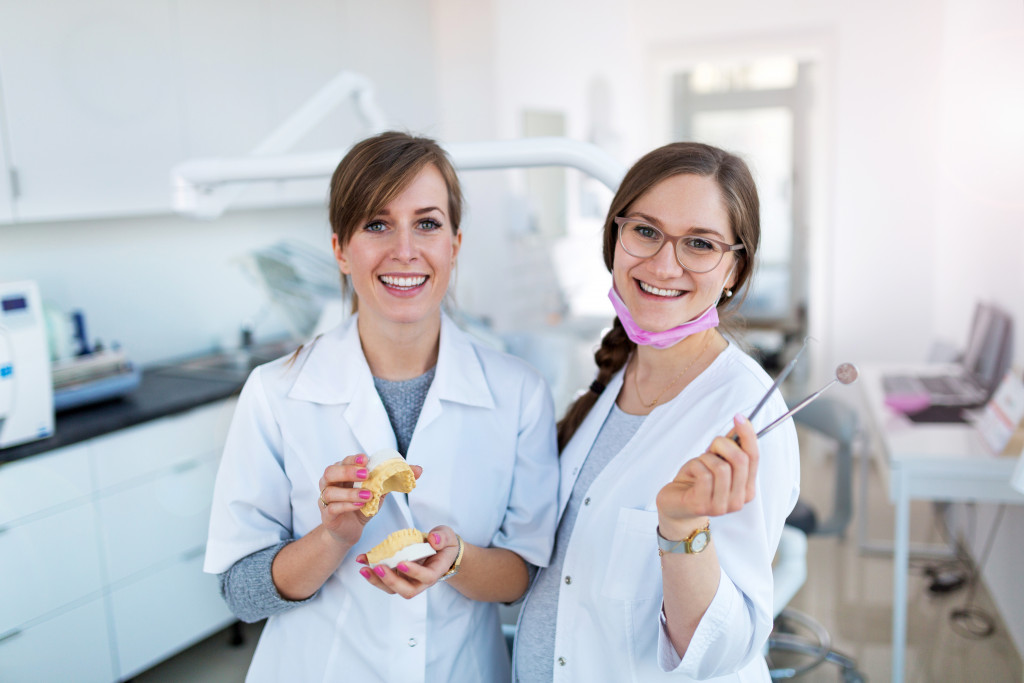- Orthodontics has seen technological advancements, such as Herbst Orthodontic Appliance and Invisalign Dental Braces, which are more comfortable and discreet.
- Digital dentistry is revolutionizing treatments with CAD/CAM technology, digital x-rays, and AI-assisted diagnosis for more accurate results.
- Preventative care is becoming increasingly important in modern dental practices to help patients stay on top of their dental health.
- Modern dental practices are using new technologies and patient-centered approaches to provide quality care that is fast, reliable, and comfortable.
The dental industry is experiencing a revolution as new technologies and innovative techniques change oral health practices. Today’s dental procedures are more patient-centered, focused on preventative care, and designed to provide personalized treatment plans. This blog post will explore some of the modern practices in the dental industry, including the ones worth keeping an eye on.
Orthodontics: The Latest Trends
Orthodontics is a branch of dentistry that focuses on correcting misaligned teeth and jaws. In recent years, the orthodontic industry has seen significant technological advancements, allowing for faster, more comfortable, and more discreet treatment options. Here are some of the latest trends in orthodontics:
Herbst Orthodontic Appliance
The Herbst orthodontic appliance is a type of orthodontic device that is used to correct overbites and underbites. It consists of metal rods and tubes that attach to the upper and lower molars, connected by a telescoping rod. The Herbst appliance is designed to help shift the lower jaw forward, bringing it into proper alignment with the upper jaw. This can help improve the bite and reduce the risk of dental problems such as jaw pain and tooth wear.
Invisalign Dental Braces
Invisalign is an alternative to traditional metal braces. It consists of clear, removable aligners that fit snugly over the teeth and gradually shift them into alignment. This device is an excellent option for those who want to improve their smile without dealing with the discomfort and visibility of metal braces. It has become increasingly popular due to its convenience and effectiveness.
3D-printed Dentures
3D printing technology is revolutionizing the production of dental prosthetics. There are now 3D-printed dentures that can be quickly and accurately created from a digital scan of the patient’s mouth. This makes it possible to develop custom-fitted dentures that provide a comfortable fit and natural look. With 3D printing, dentures can be made in a fraction of the time and cost of traditional dentures.
Digital Dentistry: Efficient and Accurate Treatment
Digital dentistry is a modern practice that uses computer technology to design and fabricate dental restorations, such as crowns, bridges, and dentures. This technology allows for more precise and efficient dental work, reducing the time and cost of treatment. The following are applications of digital dentistry:
CAD/CAM Technology
Computer-aided design and computer-aided manufacturing (CAD/CAM) technology is used to scan, design, and fabricate dental restorations. This process eliminates manual impressions, allowing for more accurate and efficient repairs. With CAD/CAM, restorations can be completed in a single visit with minimal discomfort.

Digital X-Rays
Before, dentists had to take x-rays manually and develop them in the darkroom. Now, digital x-rays can be taken quickly with minimal radiation exposure. This technology allows for more accurate diagnosis and treatment planning and the ability to easily share images with other specialists.
AI-assisted Diagnosis
Artificial intelligence (AI) technology is being used in the dental industry to improve accuracy and efficiency in diagnosis. AI algorithms are used to identify and analyze x-ray images, allowing for more accurate and faster diagnoses. AI technology can also detect patterns in a patient’s medical history to help create personalized treatment plans.
Preventative Care: A Patient-Centered Approach
Preventative care is a crucial aspect of modern dental practices. This approach identifies potential dental problems before they become more serious and require more invasive treatments. Here are some of the ways that modern dental practices prioritize preventative care:
Online Appointment Scheduling
Many modern dental practices offer online appointment scheduling, allowing patients to conveniently book appointments without calling the office. This is beneficial because it helps patients stay on top of their oral health by scheduling regular checkups.
Oral Hygiene Education
Modern dental practices focus on educating patients about oral hygiene and the importance of regular checkups. Oral health education can help patients establish good habits that will keep their teeth and gums healthy over time. For instance, patients can use apps or websites to track their daily oral hygiene habits and receive tips on improving them.

At-Home Oral Care Kits
Some dental practices provide at-home oral care kits to help patients maintain healthy teeth and gums. These kits typically include toothbrushes, floss, mouthwash, and toothpaste. By giving these kits, dental practices can help patients stay updated on their oral health care routine.
These are just some of the modern practices in the dental industry that are worth keeping an eye on. These advancements are helping to make dental treatments more efficient, comfortable, and personalized. Using technology and patient-centered approaches, dentists can provide quality care to their patients.
